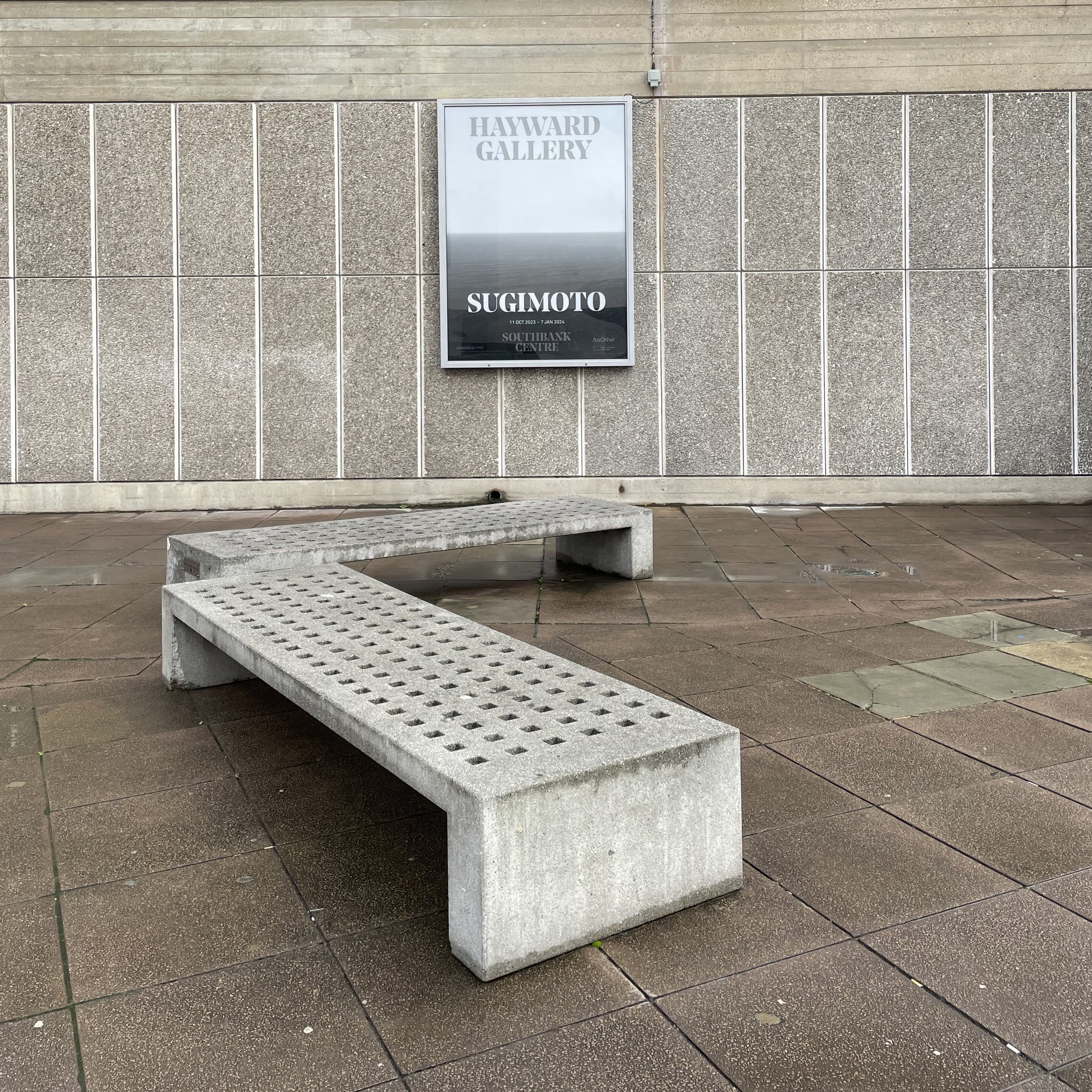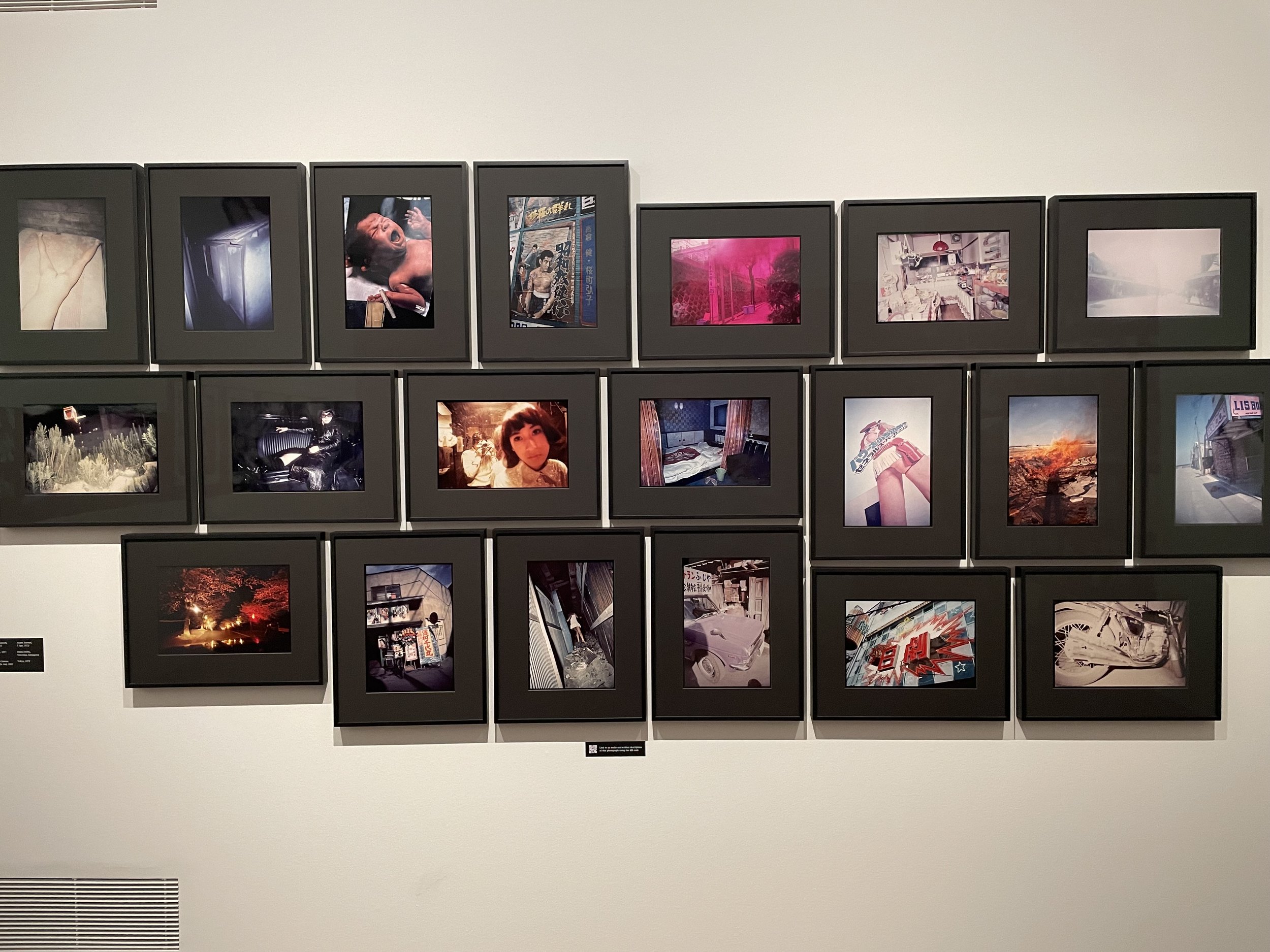Starting Informing Contexts
I wanted to start this module well so during the Winter break went and visited Hiroshi Sugimoto and Daido Moriyama’s exhibitions in London.
Hiroshi Sugimoto – Time Machine
Hayward Gallery
3rd January 2024
As I entered the Hayward Gallery I felt the importance of the light. I have visited other exhibitions there before, but it felt more purposeful and curated than previous visits. Reflecting on this I should have expected the close attention to the light and the display of the work due to Sugimoto’s acute awareness and depiction of light in his images.
Whilst looking at the ‘Conceptual Forms’ work, I considered how I could incorporate objects particularly still life into the project on Reading.
‘…their slightly chipped and scuffed edges conveying a sense of their belonging to ‘old civilizations: Greek, Roman, East Asian, Indian.’’
(Sugimoto, 2023)
Could objects represent the different areas of reading? We know they can through the exhibition at the museum but do people agree? What objects would subjects use to describe Reading? The objects used in the exhibition are historic, how does Reading look through the objects of today?
There is something peaceful about all of Sugimoto’s images, even the gruesome torture waxworks have elements of calm about them. Potentially because we know we are not looking at the ‘real’ however, the way the subjects have been photographed gives them life.
The theatre images hold a great deal of beauty, particularly for the usually ignored interior décor of the theatres. The introduction text is correct, one is rewarded by taking the time to observe his images. Looking at the drive in photographs I feel small, like looking up a the night sky and experiencing the void of space. The images of theatres and cinemas in different forms makes me think of the importance of the full experience, it is not just about a film, it is about everything around it too. Have we lost track of this? Have we become so rushed and focused on ‘the main event’ that we no longer take our time to appreciate, take in or try to understand all the elements involved?
To counter this, when looking at the brilliant white of the full exposed film and the details of the rooms it reveals it can blind us, like looking at a bright light for too long or if you accidently look at the sun. I found that the rectangular shapes were burnt into my eyes and found it overwhelming to the point where I was struggling to take in more information. This could be linked to the mobile phone and the social media people consume on these devices. Sugimoto’s images encourage the audience to explore around the white rectangle and take in more, perhaps this could now be interpreted as a comment on looking up from screens to observe the world in more detail. On my journey into London to the Hayward I was engrossed by Instagram and X during the train ride to the point I barely noticed time passing. How can we train ourselves to be more aware? How can the bright screen be dulled so our surroundings are noticed, observed, and then appreciated?
As I was at the gallery a tour started so I tagged along. The person leading the tour spoke about a writer called Oliver Burkeman and the concept of looking for a prolonged period. They encouraged visitors to look at one of the theatre images for three minutes (Burkeman suggests spending three hours) and see how much more detail was taken in when carefully looking at a photograph rather than spending a few seconds. This made me think how much a ‘normal’ person might take in when looking at an image, could a person learn more about a space? How could I use this as part of my project and more in general my practice as a photographer?
Daido Moriyama: A Retrospective
The Photographers’ Gallery
3rd January 2024
Moriyama seems to embrace the mistake. Without pretention or attitude. His work feels more like a reflection of thought and feeling, commenting on the date and events of the time.iHi
The images of cans and bottles in a market shout capitalism and an overwhelming sense of new consumerism. The blurs in the images feel intense as if on a sugar rush of new and exciting products. However, the high contrast makes the images feel otherworldly as if an advert for a dystopian wonderland that is really a front for something more sinister. Do we consume because we fear death? Are we looking to gain as much, own as much, eat, drink and experience everything so we are ‘satisfied’ before death?
‘I am already struggling just to keep grasp of my own existence.’
(Moriyama, 1969)
The presentation of Moriyama’s work exploits grids of images and the proximity of the photographs forces the audience to look at lots of work in what feels like quick succession. I feel like Moriyama is trying to give the audience a similar experience to how he was feeling. The overwhelming saturation of capitalism and Western influence could have made things confusing and in flux.
I feel the style of work fits with the style of presentation. The images are every day and feel like those that anyone, educated in photography or not could produce. If I am considering having an exhibition of my work from the Reading project, alongside images from members of the public I should pay close attention to the style of Moriyama’s exhibition. It gives a sense of place and an atmosphere of Japan at the time. I want my images (and any images that people contribute) to give a sense of Reading and the places they consider unique or interesting.
Reflecting on both exhibitions it is difficult to compare the work. Sugimotos’ images have a quiet artistic, deep quality to them. The images are created with care and dedications with research, planning, and elements outside of photography contributing to the work both in terms of the individual image and the series.
Moriyama’s work felt more createive in terms of challenging the formality of photography. The pace of the exhibition, the amount of photographs, the rule breaking nature of his work and publications.
Focusing on Sugimoto, the space used was wide, open, library like in atmosphere. The lighting used contributed to this atmosphere. The person taking the tour around the exhibition suggested that Sugimoto and the lead curator had discussed the lighting at great length, especially for the theatre images. The lighting for these made the white rectangles standout and burn after looking at for a period. But these images encourage the longer look. The detail revealed in the intricate but rarely appreciated spaces around the screens were highlighted by the residual light from the film and the lights used in the gallery. The use of natural light in the seascape images aided the feeling and imagination of being in the space, on the edge of a body of water looking out.
When thinking of the Moriyama exhibition the space is smaller and the walls covered in images to the point where you cannot look away. This is a clear choice by the curator to give a sense of how many images Moriyama make and to cover the depth and breadth of his work and required a creative approach. There were several grid style presentations which allows the audience to observe images close together and get drawn into the worlds that the photographer created. This also linked to the presentation style for his work in magazines. An affordable and easily reproduced method of presentation which suits the style of images that he presents. Due to the high turnover/output of images, it makes sense that the space felt smaller and claustrophobic, the intensity of the images plus the amount makes me think of stereotypes of modern Japan, busy, bustling, moving forwards in an intense fashion. It was interesting to compare the printing styles of both photographers. The subtle tonal ranges of Sugimoto to the harsh contrasts of Moriyama. Both styles encourage the audience to look in certain ways and feel in certain ways.
How does this link to and influence my current work and ideas?
I like the ideas of spending time with an image. The three-hour looking concept makes me think about how I should spend longer looking in general. Initially with my research and later with my own images especially when creating them. I can’t be as selective with my spaces to present work. However, I want to be able to work on the idea of having an exhibition of the work alongside other people’s images. I will not have total control of the photographs that they produce but can influence how they are presented, and this is influenced by Moriyama. I may not have close control of lighting in any space I can use for an exhibition however I want to consider how the lighting can impact how an audience might see the images and the ideas it gives them. Currently, I want the images to be democratic and having images presented in grids could be a good way to do this.



